Located in the protected natural area of the Flecha de Nueva Umbría, the Real de la Almadraba was built in 1929 after four centuries of this technique of tuna fishing on the Huelva coast. The complex is made up of three well-differentiated areas: a residential area made up of a series of sheds set up as a camp where the Almadraba workers lived; The Captain’s House, of greater standing and somewhat removed from the rest of the complex; And the group of industrial parts that allowed the maintenance of fishing gear, made up of the jetty, the diesel cabin, the tar smelting boiler and its chimney, and the tar pit. Finally, the Real de la Almadraba was abandoned in the seventies and was considered protected heritage in 2015.
Sol89 Landscape intervention in the Almadraba de Nueva Umbría

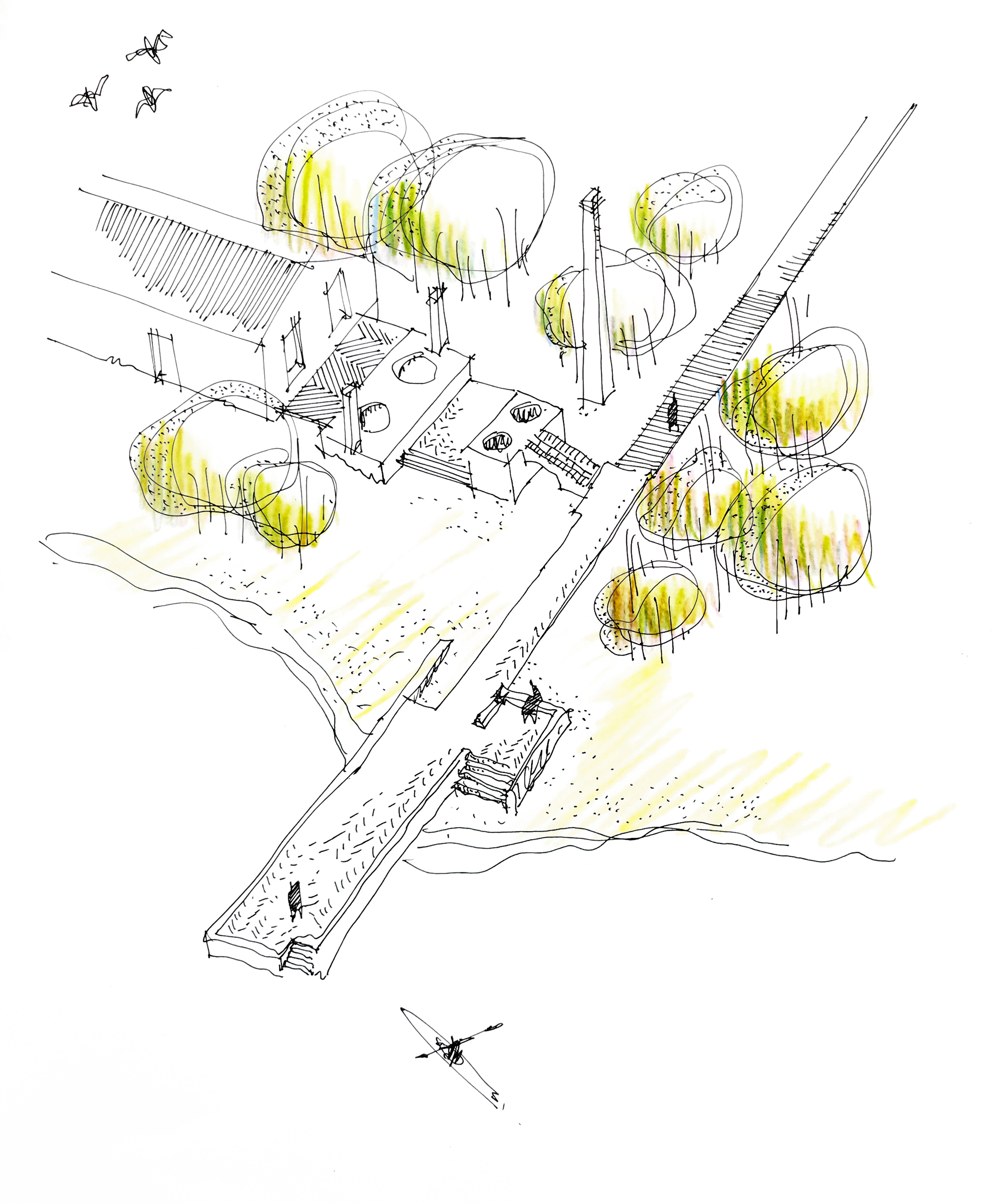
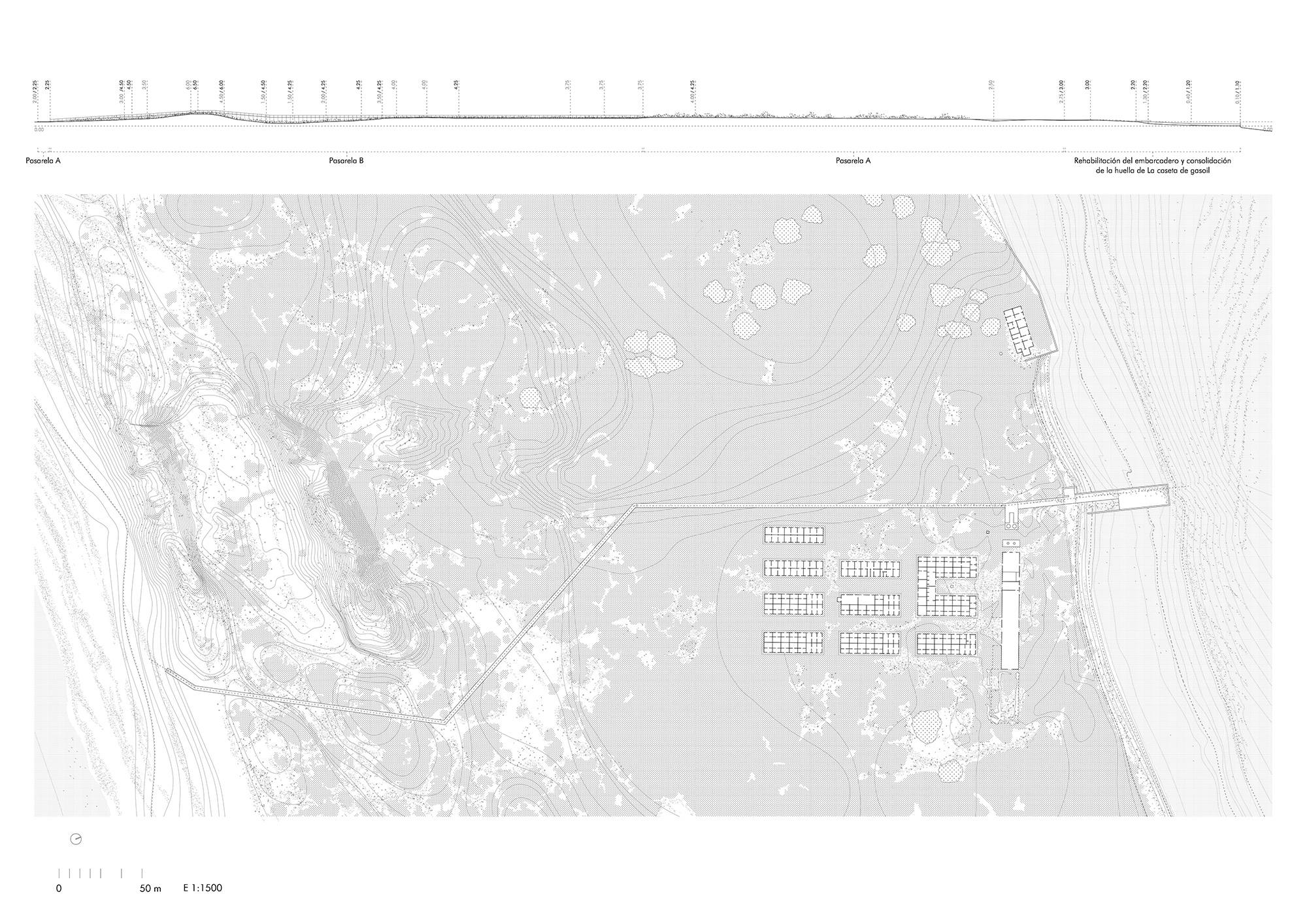
The intervention acts on the industrial pieces and is completed with a new pedestrian path that joins the two banks of La Flecha: the mouth of the Piedras River and the Atlantic Ocean. The rehabilitation is divided into two areas, the ruin of the jetty and the diesel booth, and the boiler, the chimney and the tar pit, in a better state of conservation. The jetty was a floodplain piece built with local stones as a dam. We can find this type of jetty in other Almadrabas in Andalusia and it dates back to Roman construction. The very difficult conditions of execution due to the tides at the mouth of the river and the complex supply conditions of the work in this natural area, have led us to rebuild the jetty with a technique close to the Roman manner. From the trace of the old jetty, using its remains as a foundation, a perimeter wall of cyclopean concrete has been built with grauwaca stone from the place by layers that took advantage of the low tide for its implementation. These walls are reinforced with fiberglass instead of steel to avoid corrosion problems and they are braced by a lower and an upper floor for absorbing the strong horizontal thrusts of the river current. This form of construction also provides a tectonic quality where the concrete allows the native stone to emerge and forms a stratified geological volume, closer to the origin of this type of jetties and in accordance with the protected complex and the river edge. Finally, the upper floor is grooved by means of a handcrafted mold printed on the fresh concrete that generates a herringbone pattern, close to the Real de la Almadraba pavements that were dedicated to the draining of the molten tar.
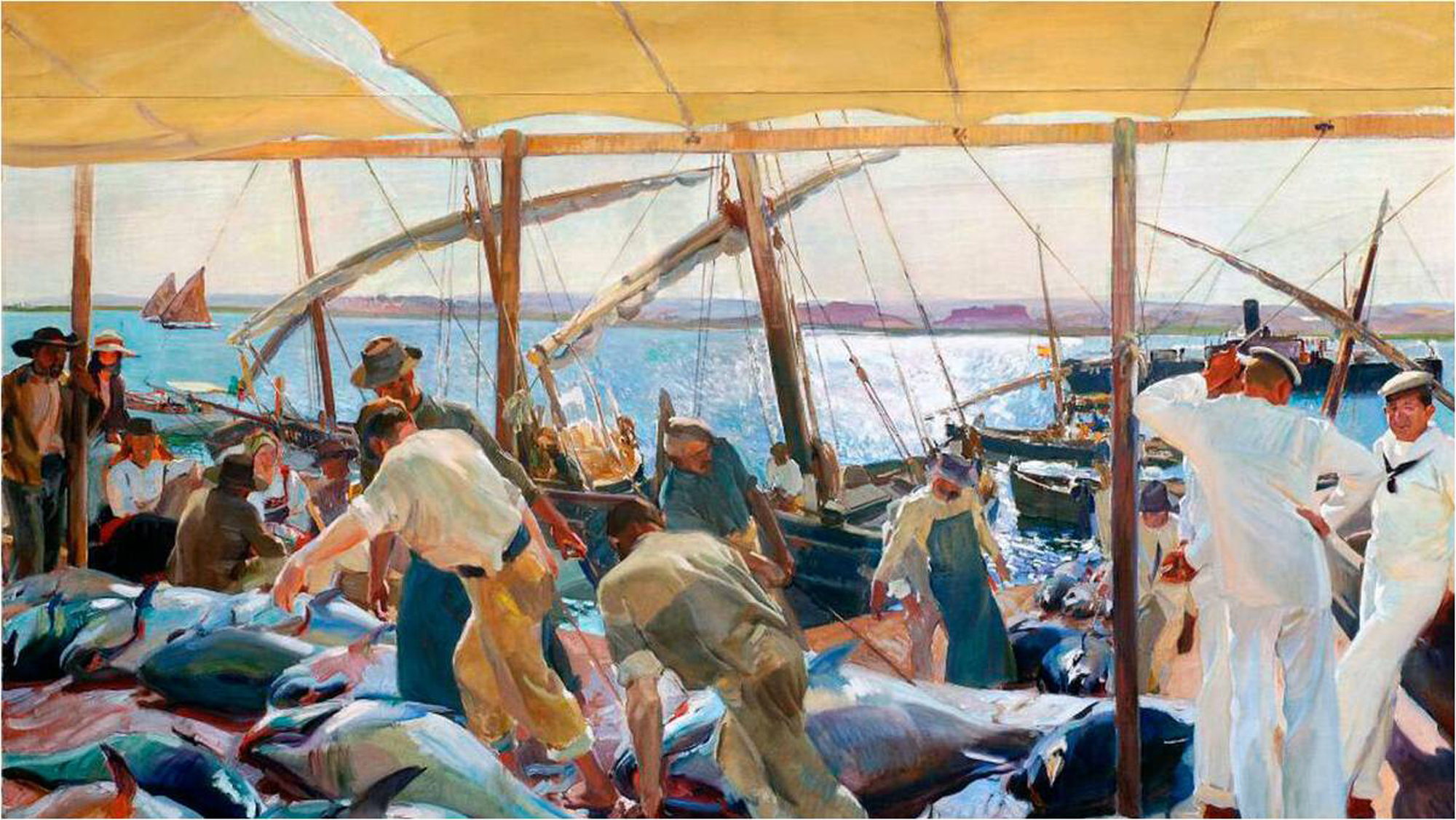
Ayamonte. La pesca del atún, Joaquín Sorolla, 1919

El rompido, Soledad Sevilla, 2002

Pesca en la Almadraba de Nueva Umbría, Fondo Fotográfico IES Rafael Reyes de Cartaya
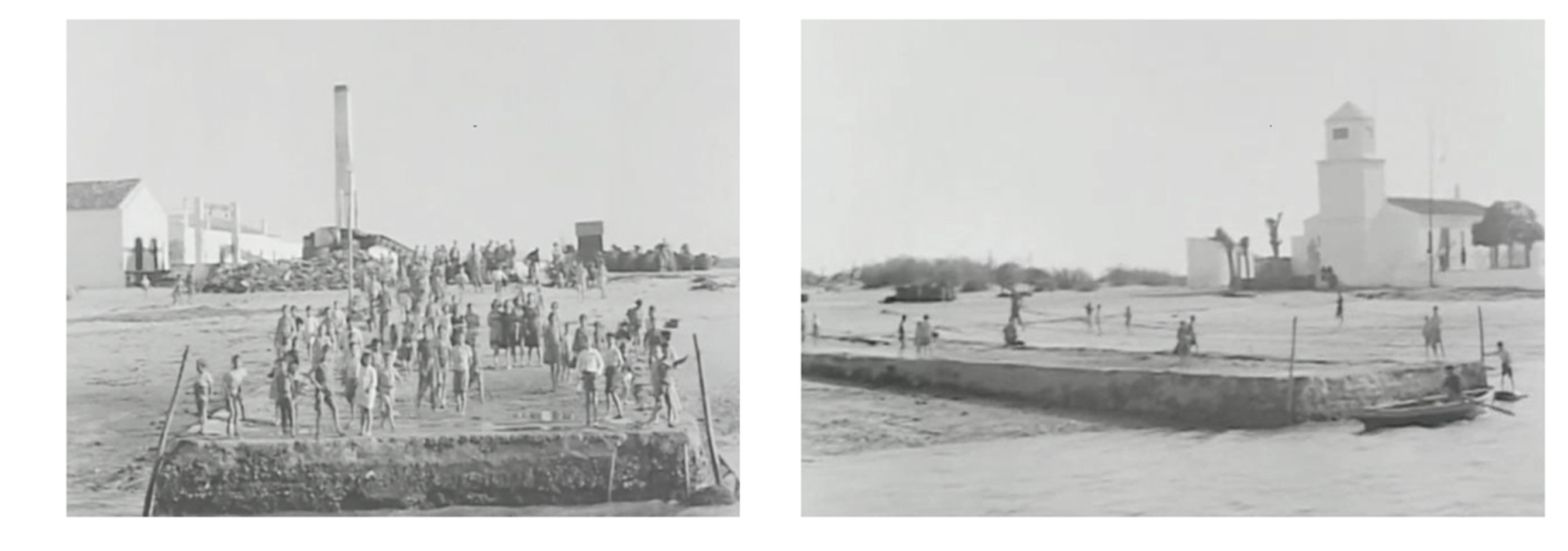
Fotogramas de película sobre la Almadraba de Nueva Umbría, Archivo Filmográfico Facultad veterinaria de Córdoba

Spiral Jetty Vs. Almadraba
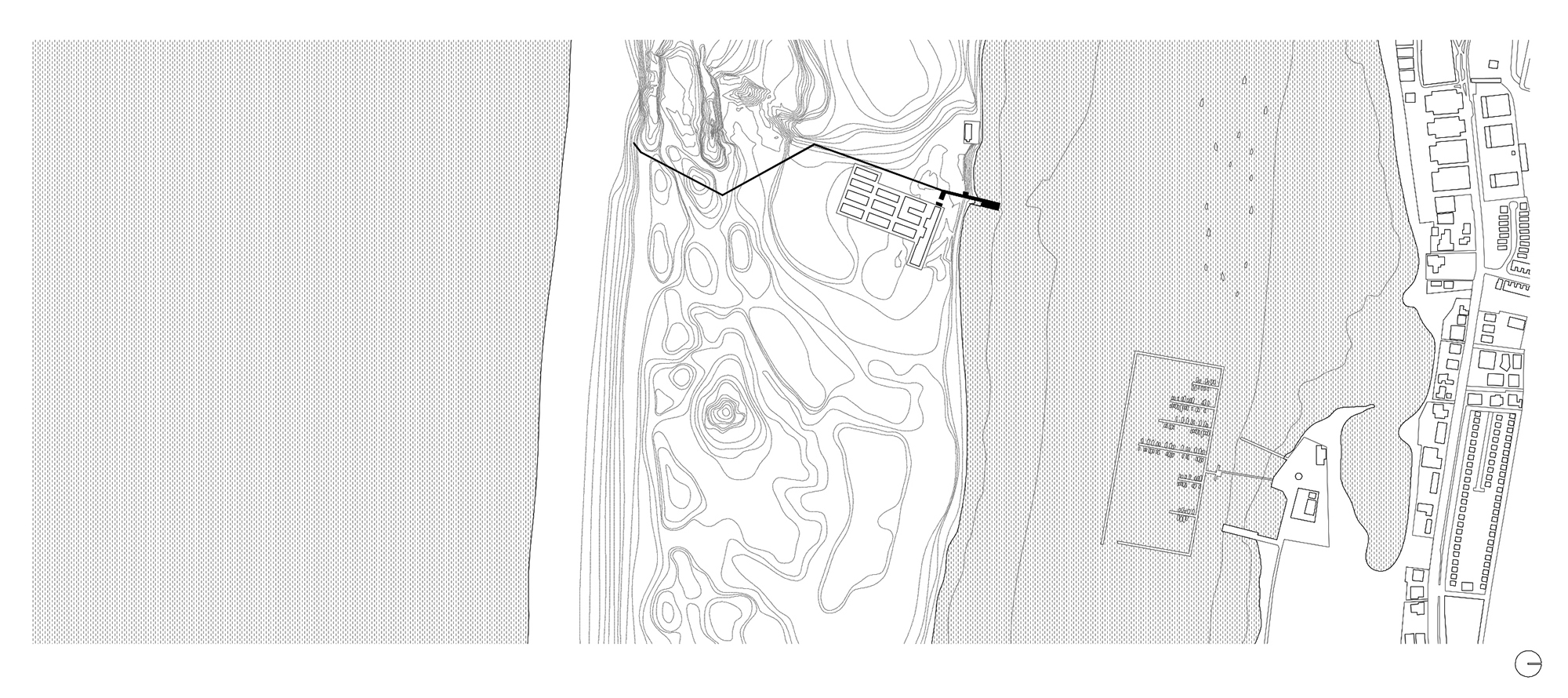
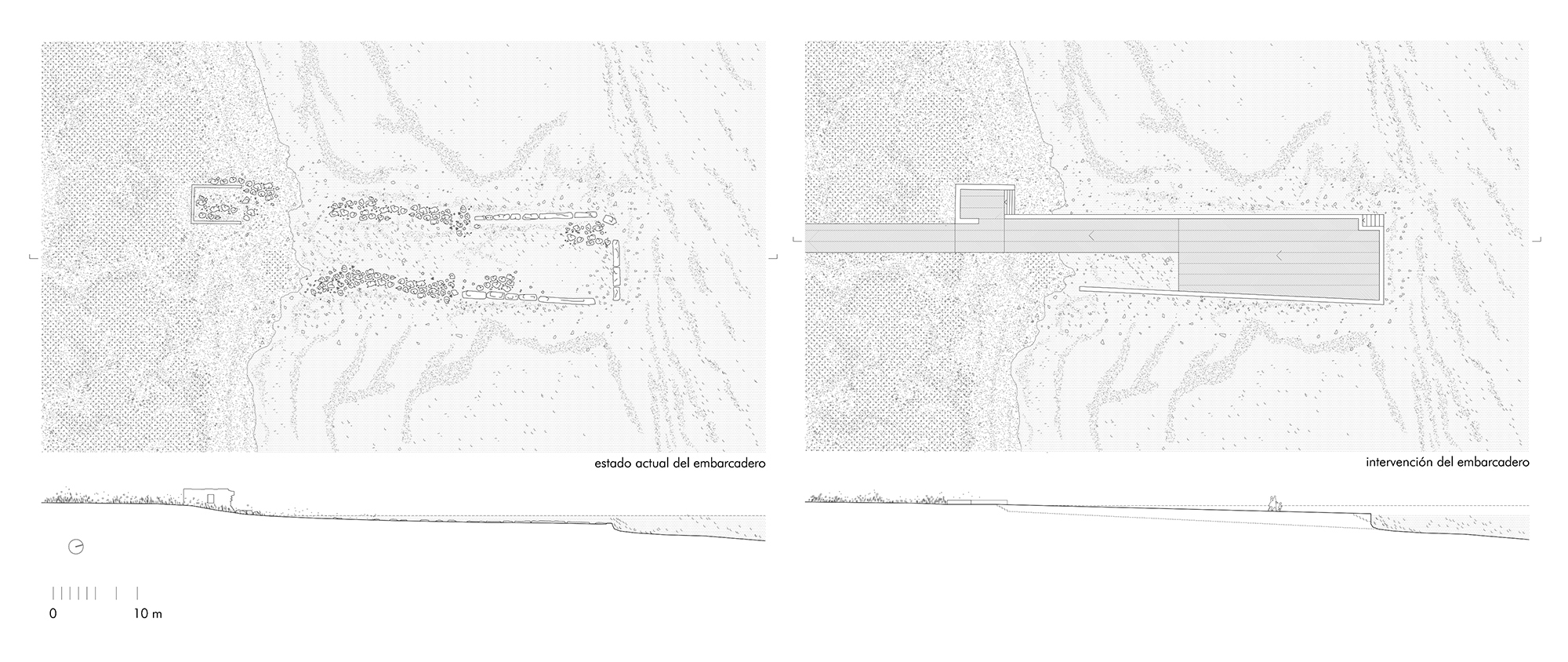




On the other hand, the rehabilitation of the boiler, the chimney, the tar pit and the drain, has started from philological criteria, thanks to the fact that its state of conservation allowed us to deduce the construction techniques and the finishes that had been presented in the past. From the grooved pavement of the jetty we access the boiler, from this point it is possible to understand the entire process of protecting the fishing gear with tar. The staircase of the two ovens boiler presents a central padded section that allowed the ascent of the barrels of tar. The tar was melted and passed to the tar pit where the fishing nets were hung from a clothesline and descended towards the two pits of molten tar with a pulley. Finally, the nets went to the draining shed where they dried and the excess melted tar was recovered through the grooved floor. The restoration has been carried out with hauling ceramic pieces found on the site, thus reducing the need to supply material and guaranteeing the compatibility of its behavior. The ceramic walls are finished with lime mortars and silicate paint that will favor the transpiration and It gives the whole an appearance of white volumes that stood out in the landscape.




The third intervention in the area of the Real de la Almadraba enables an accessible path between the two banks of La Flecha. The high landscape value of this protected natural area suggests carrying out a reversible installation by means of a wooden pedestrian path that gradually enters the thicket of broom shrubs. The geometry of this walkway results from crossing the two powerful dune ridges that precede the Atlantic Ocean. This geometry avoids strong earth movements that alter the existing landscape and causes excessive slopes for disabled people. The path begins with a platform directly resting on the ground to limit the cost and is gradually raised on stilts when it is necessary to reach greater height to overcome the continuous differences in elevation. From this point the wooden platform offers an impressive view of La Flecha landscape. The design of the walkway and the railings is based on the usual industrial systems although the brackets have been modified so that the protective elements of the railing are also fastening, resulting in a more abstract element that crosses the landscape without denoting its scale. This powerful railing protects the flora of jonquil, thistle, lily and sea caterpillar and the nesting of harriers, storks and egrets.
The project for this protected landscape and architectural complex has sought to recover the industrial significance of the Almadraba fishing process. We tried to reveal the patrimonial and ethnological heritage of a former fishing technique that coexisted with the landscape of the Huelva coast.


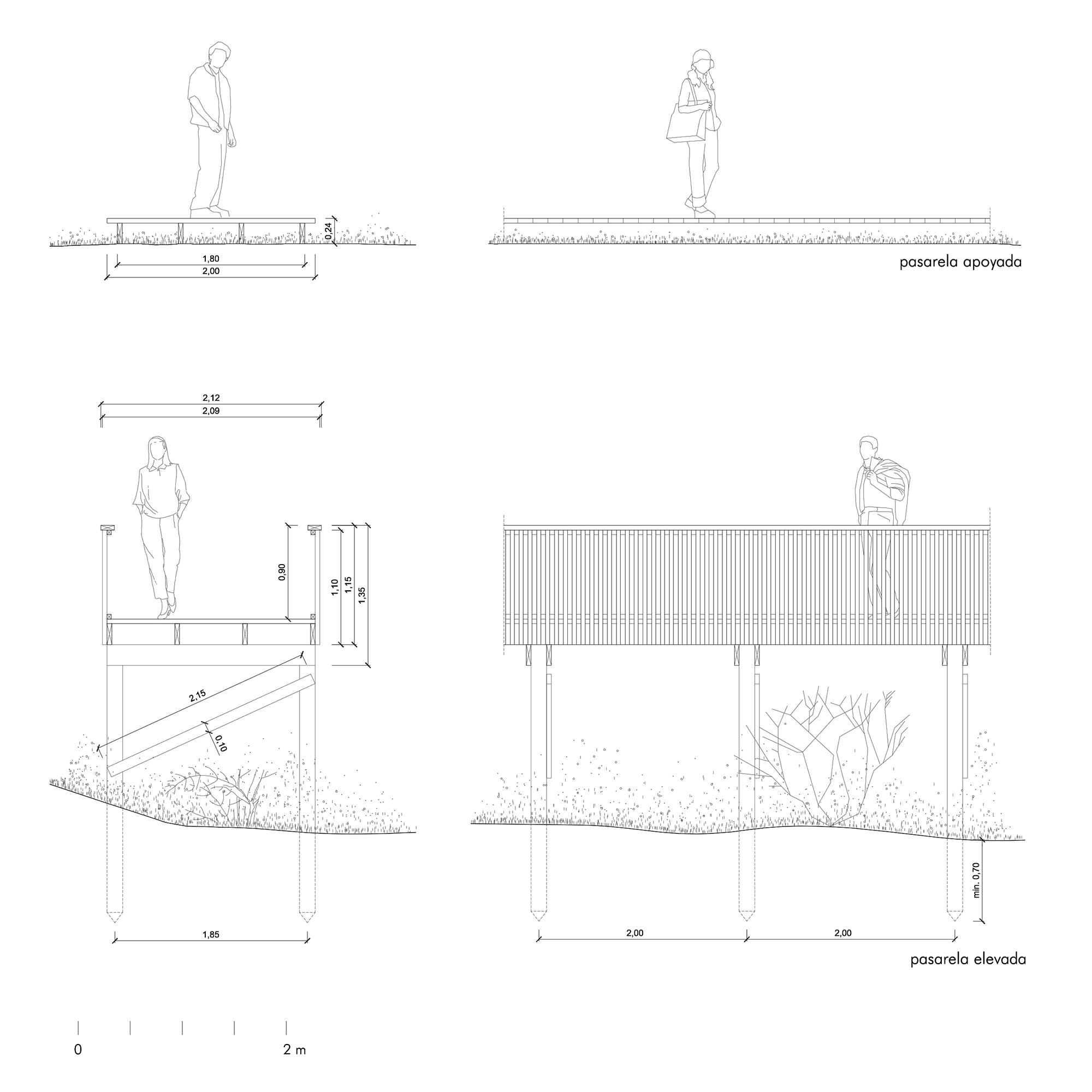


Other projects by Sol89




